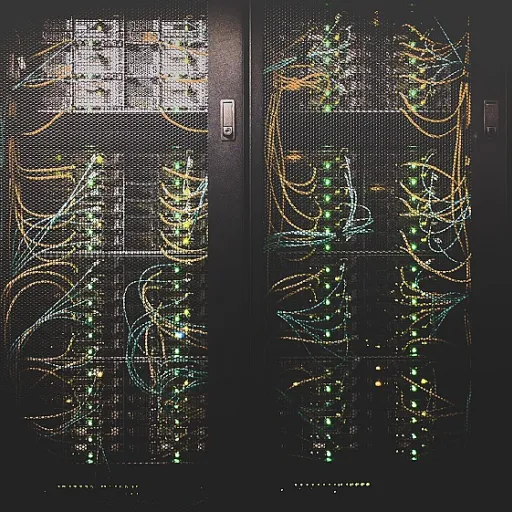
Understanding the Importance of User Experience
The Significance of User Experience in Modern Web Design
In today's digital landscape, user experience (UX) has become a cornerstone of successful web design. As users increasingly interact with websites across a myriad of devices, from desktops to mobile phones, the demand for intuitive and seamless user experiences has never been greater. This shift underscores the importance of responsive design, which ensures that websites adapt fluidly to different screen sizes and devices.
Responsive layouts are not just a trend; they are a necessity. They allow designers to create websites that offer a consistent and engaging experience, regardless of how users access them. This is where tools like Framer come into play. Framer, along with other design tools such as Figma, provides designers with the capabilities to craft responsive layouts that enhance user engagement and satisfaction.
Framer offers a suite of advanced features that make it easier to design intuitive user interfaces. With its responsive design capabilities, designers can create layouts that automatically adjust to different screen sizes, ensuring that the user experience remains seamless across all devices. This is particularly important for landing pages and portfolios, where first impressions are crucial.
Moreover, Framer's integration of animations and live previews allows designers to see how their designs will perform in real-time, further enhancing the design process. By utilizing Framer templates, designers can quickly build and iterate on their designs, making the process not only efficient but also more creative.
For those looking to explore the intricacies of user experience further, understanding the role of responsive layouts in modern design is essential. As we delve deeper into the challenges and future trends in user experience design, it's clear that tools like Framer will continue to play a pivotal role in shaping the future of web design.
For more insights on enhancing user experience, consider exploring the importance of viewport meta in helpdesk software, which can be found here.
The Role of Responsive Layouts in Modern Design
Responsive Layouts: A Pillar of Modern Web Design
In today's digital landscape, responsive layouts have become a cornerstone of effective web design. As users increasingly access websites from a variety of devices, from mobile phones to large desktop screens, ensuring a seamless user experience across all screen sizes is crucial. This is where the concept of responsive design comes into play.
Responsive layouts adapt to the user's device, providing an optimal viewing experience regardless of the screen size. This adaptability not only enhances user satisfaction but also improves engagement and retention rates. With tools like Framer, designers can create responsive websites that adjust fluidly, ensuring that every user, whether on a mobile or a desktop, has a consistent and intuitive experience.
Framer offers a range of advanced features that make designing responsive layouts easier. Its intuitive interface allows designers to experiment with different layouts and see how they will appear on various devices in real-time. This capability is particularly beneficial for creating landing pages and portfolios that need to look polished and professional across all platforms.
Moreover, the use of templates in Framer simplifies the design process. Designers can start with a free Framer template and customize it to fit their specific needs, saving time and effort. This flexibility is a significant advantage for those looking to build a website quickly without compromising on quality.
As the demand for responsive design continues to grow, understanding its role in modern web design is essential. By leveraging tools like Framer, designers can create websites that not only look great but also provide a seamless user experience. For more insights on how responsive layouts are shaping the future of web design, consider navigating the shift to composable commerce.
Introduction to Framer as a Design Tool
Exploring Framer as a Versatile Design Tool
In the realm of modern web design, Framer has emerged as a powerful tool that caters to both novice and experienced designers. Its ability to create responsive layouts and intuitive user experiences makes it a standout choice for those looking to craft seamless digital interfaces.
Framer offers a comprehensive suite of features that streamline the design process. Whether you're building a portfolio or a landing page, Framer's templates provide a solid foundation to start from. The tool's flexibility allows designers to tailor these templates to fit various screen sizes, ensuring that the final product is both visually appealing and functional across all devices.
One of the key advantages of using Framer is its integration with other popular design tools like Figma. This compatibility allows for a smooth transition between platforms, enabling designers to import their existing projects and enhance them with Framer's advanced features. The tool's ability to incorporate animations and live interactions further enriches the user experience, making websites more engaging and dynamic.
Framer's user-friendly interface makes it accessible to designers of all skill levels. Its free plan offers a range of basic features, while the free framer version allows users to explore its capabilities without financial commitment. For those seeking more advanced functionalities, Framer provides options to upgrade, unlocking a wider array of design possibilities.
In conclusion, Framer stands out as a versatile design tool that empowers designers to create responsive websites with ease. Its ability to adapt to different screen sizes and integrate with other tools makes it an invaluable asset in the ever-evolving landscape of web design.
Designing Responsive Layouts in Framer
Leveraging Framer for Responsive Layouts
Designing responsive layouts in Framer offers a unique blend of flexibility and precision, making it an ideal tool for creating intuitive user experiences. Framer allows designers to craft layouts that adapt seamlessly across various screen sizes, ensuring that users enjoy a consistent experience whether they're on a mobile device or a desktop.
One of the standout features of Framer is its ability to integrate animations and interactions effortlessly. This capability enhances the user experience by making interfaces more engaging and dynamic. With Framer, designers can create live prototypes that provide a realistic preview of how the final product will function, which is crucial for testing and refining user interactions.
Utilizing Templates and Advanced Features
Framer offers a range of templates that can serve as a starting point for your design projects. These templates are particularly useful for those who are new to the tool or need to expedite the design process. By using these pre-built layouts, designers can focus more on customizing the user experience rather than starting from scratch.
Moreover, Framer's advanced features, such as its code capabilities, allow for a deeper level of customization. Designers who are comfortable with coding can extend the functionality of their designs, creating more complex and tailored user experiences. This flexibility is one of the reasons why Framer is a preferred choice for many web design projects.
Creating Seamless User Experiences
To design seamless user experiences, it's essential to consider how responsive layouts will function across different devices. Framer's intuitive interface makes it easy to adjust designs for various screen sizes, ensuring that the layout remains consistent and user-friendly. This adaptability is crucial in today's digital landscape, where users expect websites to perform well on any device.
Incorporating responsive design principles into your Framer projects not only enhances the user experience but also aligns with modern web design standards. By prioritizing responsiveness, designers can create websites that are both visually appealing and highly functional, meeting the needs of diverse user groups.
Challenges in Designing Seamless User Experiences
Overcoming the Hurdles of Crafting Seamless User Experiences
Designing seamless user experiences is no small feat, especially in a world where users expect websites to function flawlessly across a myriad of devices and screen sizes. One of the primary challenges is ensuring that responsive layouts adapt smoothly, providing a consistent experience whether on a mobile device or a desktop. This is where tools like Framer come into play, offering advanced features that simplify the process of creating responsive designs.
However, even with powerful design tools, several obstacles can arise:
- Complexity of Responsive Design: Crafting a layout that works across all devices requires meticulous planning and testing. Framer allows designers to create responsive layouts, but understanding how each element will behave on different screen sizes is crucial.
- Integration with Existing Systems: Many websites are built using a variety of platforms and tools, such as Figma or other website builders. Ensuring that a design created in Framer integrates seamlessly with these systems can be challenging.
- Maintaining Performance: As websites become more interactive, with animations and live updates, maintaining performance across all devices becomes a priority. Designers must balance aesthetics with functionality to avoid slow loading times and poor user experiences.
- Consistency Across Platforms: Users expect a consistent experience whether they are interacting with a website on a mobile device or a desktop. This requires careful consideration of how templates and layouts are designed and implemented.
Despite these challenges, the future of user experience design looks promising. With tools like Framer offering free plans and advanced features, designers have more resources than ever to create intuitive and responsive websites. As the industry evolves, staying updated with the latest trends and continuously refining design skills will be key to overcoming these hurdles.
Future Trends in User Experience Design
Emerging Trends in User Experience Design
The future of user experience design is poised for significant transformation, driven by technological advancements and evolving user expectations. As we look ahead, several key trends are emerging that will shape how designers approach creating intuitive and engaging experiences.
AI and Machine Learning Integration
Artificial intelligence and machine learning are becoming integral to design processes, offering new ways to personalize user experiences. These technologies enable designers to analyze user behavior and preferences, allowing for more tailored and responsive layouts. Tools like Framer are increasingly incorporating AI capabilities, making it easier to create dynamic and adaptive designs that cater to individual user needs.
Enhanced Interactivity with Advanced Animations
Animations are no longer just decorative elements; they play a crucial role in guiding users through interfaces. As design tools like Framer continue to evolve, they offer more sophisticated animation features that enhance interactivity and engagement. These animations help create seamless transitions and provide users with a more immersive experience, whether on mobile devices or desktop screens.
Focus on Accessibility and Inclusivity
Designing for accessibility is becoming a priority as awareness grows about the importance of inclusive design. Ensuring that websites and applications are usable by people with diverse abilities is not just a legal requirement but a moral imperative. Responsive layouts must consider various screen sizes and input methods to accommodate all users, making tools like Framer essential for creating accessible designs.
Responsive Design for Diverse Devices
With the proliferation of devices, from smartphones to tablets and beyond, responsive design remains a cornerstone of modern web design. Designers must ensure that their layouts adapt seamlessly to different screen sizes and orientations. Framer offers robust features that simplify the creation of responsive layouts, ensuring a consistent user experience across all devices.
Integration of Augmented Reality (AR)
Augmented reality is emerging as a powerful tool for enhancing user experiences. By overlaying digital information onto the physical world, AR offers new opportunities for interaction and engagement. As AR technology becomes more accessible, designers will need to consider how to integrate these experiences into their projects, using tools like Framer to prototype and test AR interactions.
As we navigate these trends, the role of design tools like Framer will be pivotal in enabling designers to craft experiences that are not only visually appealing but also functional and user-centric. The future of user experience design is bright, with endless possibilities for innovation and creativity.















